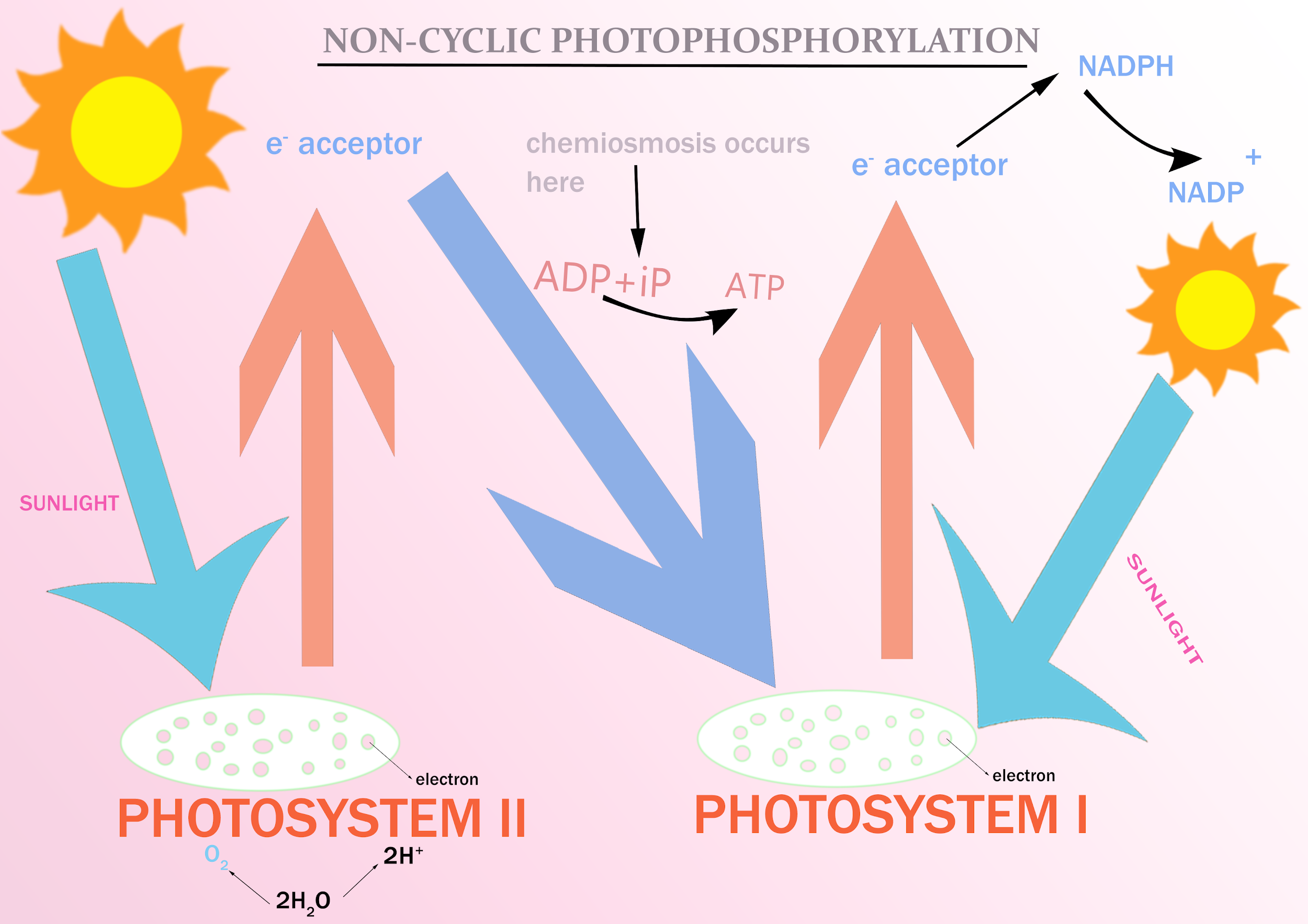
NADP reduces to
A. PS- I
B. PS- II
C. Calvin cycle
D. Non-cyclic photophosphorylation
Answer
498.3k+ views
Hint: Reduction of NADP to
Complete answer:
The non-cyclic photophosphorylation is known as Z-scheme and it involves both PS-I and PS-II photosystems.
The reduction of NADP to
Additional Information:
The steps involved in non-cyclic photophosphorylation are as follows:
-Absorption of light energy of specific wavelength by the chlorophyll and accessory pigments. These pigments absorb energy and transfer it to the reaction center of PS- II P680. This results in photoexcitation of the P680 reaction center and it discharges one electron which is passed to a pigment named pheophytin.
-This loss of electron is compensated by absorbing electrons released during the photolysis of water.
-After passing through a series of carriers plastoquinone, cytochromes,
-P700 releases this electron on absorbing light energy of a suitable wavelength.
-This electron is transferred through several quinones, FeS complexes, Ferredoxin, and NADP reductase.
So, the correct answer is, ” NADP reduces to
Note: It should be noted that the PS- I and PS- II photosystems are named just in the order in which they were discovered. In cyclic photophosphorylation of PS-I is involved but both photosystems are involved in the non-cyclic type of photophosphorylation. In the non-cyclic type of photophosphorylation both ATP and NADPH are formed, which are considered as assimilatory power, but in the cyclic type of photophosphorylation only ATP formation takes place.

Complete answer:
The non-cyclic photophosphorylation is known as Z-scheme and it involves both PS-I and PS-II photosystems.
The reduction of NADP to
Additional Information:
The steps involved in non-cyclic photophosphorylation are as follows:
-Absorption of light energy of specific wavelength by the chlorophyll and accessory pigments. These pigments absorb energy and transfer it to the reaction center of PS- II P680. This results in photoexcitation of the P680 reaction center and it discharges one electron which is passed to a pigment named pheophytin.
-This loss of electron is compensated by absorbing electrons released during the photolysis of water.
-After passing through a series of carriers plastoquinone, cytochromes,
-P700 releases this electron on absorbing light energy of a suitable wavelength.
-This electron is transferred through several quinones, FeS complexes, Ferredoxin, and NADP reductase.
So, the correct answer is, ” NADP reduces to
Note: It should be noted that the PS- I and PS- II photosystems are named just in the order in which they were discovered. In cyclic photophosphorylation of PS-I is involved but both photosystems are involved in the non-cyclic type of photophosphorylation. In the non-cyclic type of photophosphorylation both ATP and NADPH are formed, which are considered as assimilatory power, but in the cyclic type of photophosphorylation only ATP formation takes place.

Recently Updated Pages
Master Class 9 General Knowledge: Engaging Questions & Answers for Success

Master Class 9 English: Engaging Questions & Answers for Success

Master Class 9 Science: Engaging Questions & Answers for Success

Master Class 9 Social Science: Engaging Questions & Answers for Success

Master Class 9 Maths: Engaging Questions & Answers for Success

Class 9 Question and Answer - Your Ultimate Solutions Guide

Trending doubts
State and prove Bernoullis theorem class 11 physics CBSE

What are Quantum numbers Explain the quantum number class 11 chemistry CBSE

Who built the Grand Trunk Road AChandragupta Maurya class 11 social science CBSE

1 ton equals to A 100 kg B 1000 kg C 10 kg D 10000 class 11 physics CBSE

State the laws of reflection of light

One Metric ton is equal to kg A 10000 B 1000 C 100 class 11 physics CBSE




